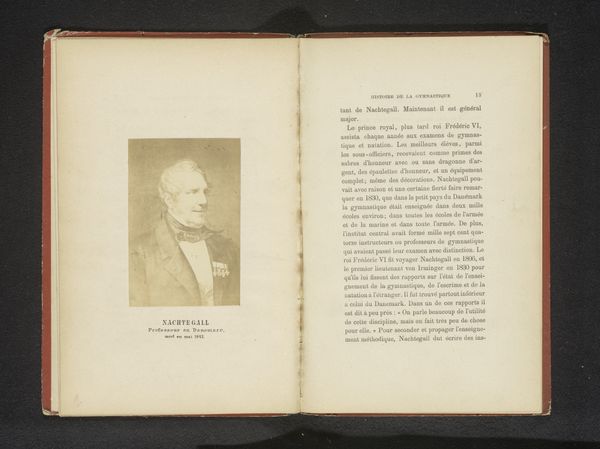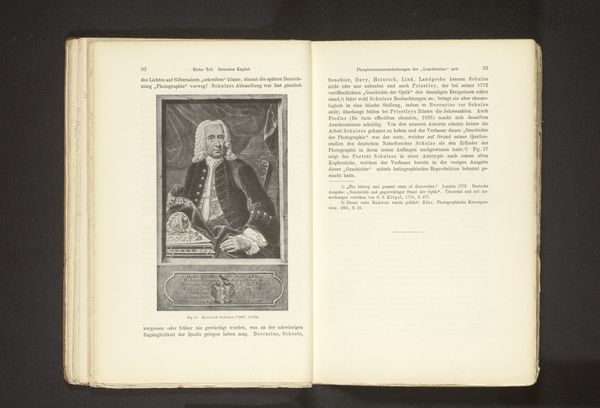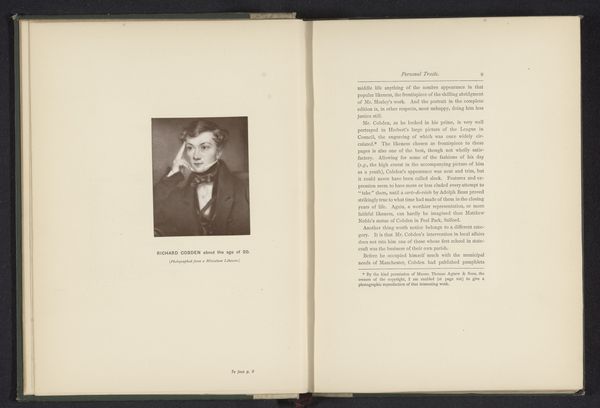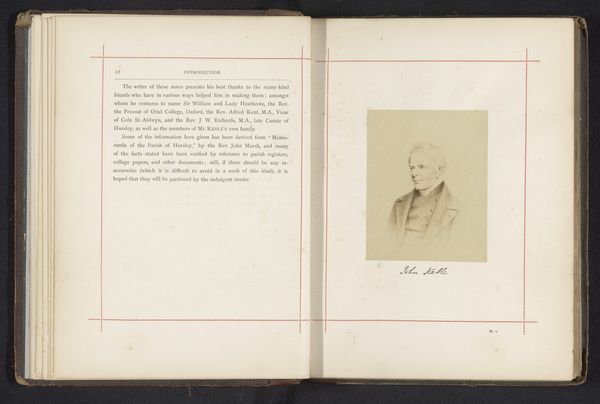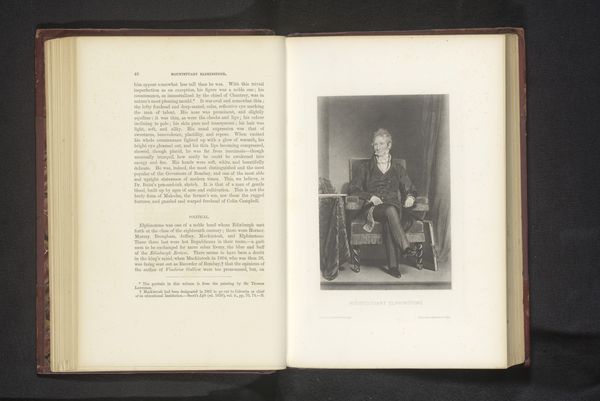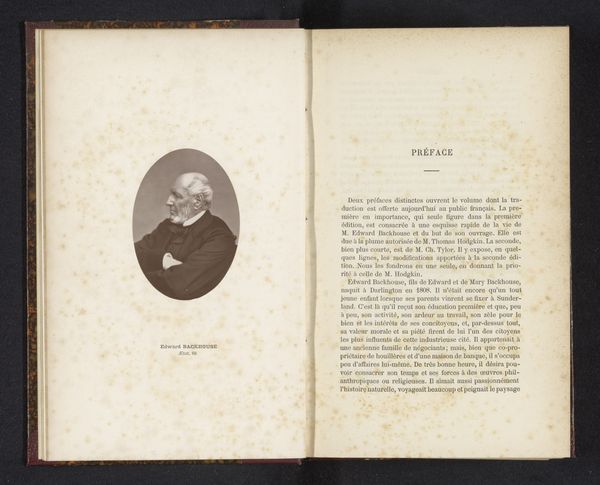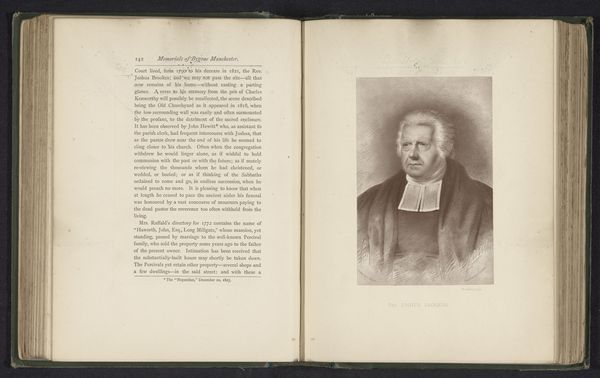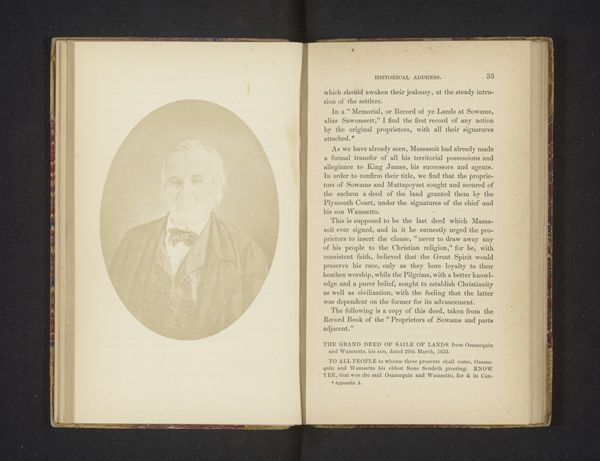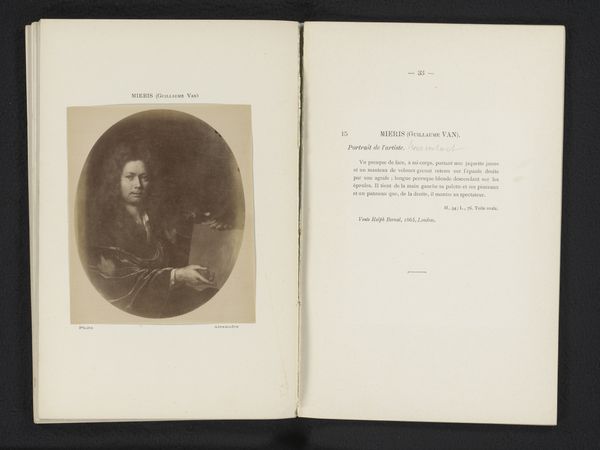
Fotoreproductie van een portret van Absalom Watkin geschilderd door William Bradley before 1891
0:00
0:00
print, photography
#
portrait
# print
#
photography
#
realism
Dimensions: height 135 mm, width 98 mm
Copyright: Rijks Museum: Open Domain
Curator: Here we see a photographic reproduction of William Bradley's portrait of Absalom Watkin, dating from before 1891. The image is printed directly onto a page of what appears to be a bound volume. Editor: My first impression is one of contained power, like a tightly coiled spring. The sepia tones soften what would otherwise be a rather severe countenance. Curator: Bradley was a well-regarded portraitist, and this reproduction speaks to the enduring significance of Watkin, who was an anti-corn law campaigner. Reproducing the portrait in a book aimed to disseminate his image and ideals further, giving the portrait a wider audience. Editor: It is interesting, isn't it? This near-ubiquitous circulation transforms him from a man into a sort of icon, instantly recognisable, embodying those political struggles. One can easily imagine copies adorning the walls of reformist meeting places. Do you get a sense he was an intellectual? Those finely-tapered fingers almost tell the whole story. Curator: Precisely! And consider the power dynamics at play here. Photographic reproduction democratized access to art and images. While the original painting may have been exclusive to a wealthy family, this photographic copy made his likeness widely accessible, helping shape his public persona and enshrining his political legacy for generations to come. It's all about power, accessibility, and enduring influence. Editor: Yes, almost like planting a symbolic flag, isn't it? And the fact that it’s bound in a book with text lends an additional dimension – it places him within a narrative. His legacy has been rendered, re-shaped through this medium into something enduring for us to examine. So fascinating, wouldn't you agree? Curator: Absolutely. Examining images like these give valuable insight into both the man himself and the culture that venerated him, offering crucial clues to understanding 19th-century Britain. Editor: For me, I am taking away something more personal about the quiet influence someone can still hold across a distance, regardless of passing years. His spirit is somehow still here.
Comments
No comments
Be the first to comment and join the conversation on the ultimate creative platform.
